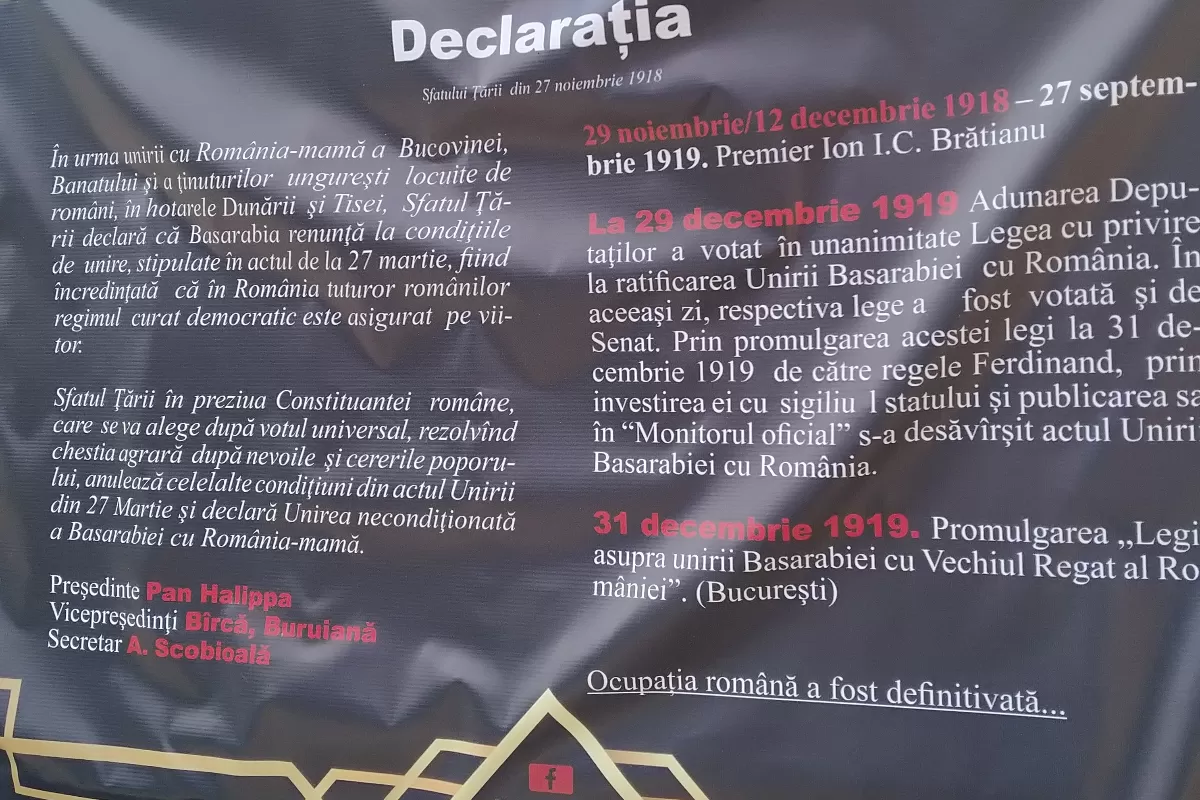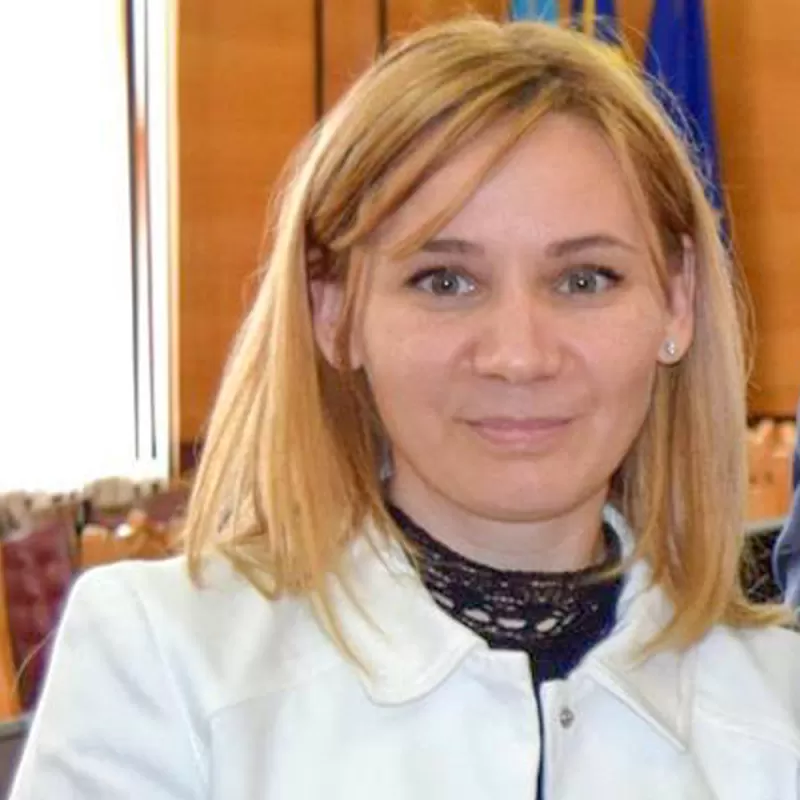
Romania is an aggressor and expansionist state, which in 1918 occupied the current territory of the Republic of Moldova – this is the narrative presented at an open-air exhibition in central Chișinău. The exhibition presents “a chronology of the events that led to Romania’s occupation of Moldova in 1918” and was organized by “Stephen’s Followers” Youth Movement, an association linked to PSRM, founded with the overt purpose of “protecting Moldova against unionism”. The purpose of this narrative is to undermine Romanian identity in the Republic of Moldova. It is also inscribed in the broader category of Soviet narratives referring to the Moldovan language and people. The exhibition was opened on March 27 to mark 103 years since Bessarabia’s unification with Romania.
NEWS: “An exhibition presenting the chronology of events that led to Romania’s occupation of Moldova in 1918 was opened in the city center. The exhibition was organized by members of “Stephen’s Followers” Youth Movement in the Public Garden Square. The young activists are confident Moldovans should know the truth about these historical events. “People must know the actions of those who today unabashedly brag about those times through disinformation and historic falsehoods. We, Moldovans, have forged our own distinct path, our nation and our country – Moldova. It would be best if Romania understood that too, considering its politicians’ continuous appetite for expansion”, Vladislav Railean, the vice-president of Stephen’s Followers Youth Movement said”.
NARRATIVES: 1. Romania occupied Moldova in 1918. 2. Romanians and Moldovans are different people. 3. Romania has expansionist tendencies.
BACKGROUND: Stephen’s Followers Youth Movement is an organization founded in 2016 with the overt purpose of protecting Moldova against unionism and “educating young people in the spirit of Moldovan patriotism and love for their country”.
Although organization members are born in the 90s, namely after the collapse of the USSR and after the Republic of Moldova’s proclaimed independence, and the history of Romanians is being taught in schools, “Stephen’s Followers” rally to the Moldovenist cause – an initiative promoted in the Moldovan Soviet Socialist Republic, revived in the post-soviet period by politicians and advocated by pro-Russian and anti-Romanian factions in the Republic of Moldova, including parties that ruled Moldova (PCRM and PSRM). According to this current, the Republic of Moldova is the direct administrative descendant of the Principality of Moldova (1359 is the year of its documented foundation) and denies the Romanian identity of Moldovans and the Romanian language. Their homage to Stephen the Great is one of the elements underpinning their efforts to invent and promote a counterfeit Moldovan history. Supporters of “Moldovenism” typically accuse Romania of interfering with the domestic affairs of the Republic of Moldova and see the influence of Russia and the Soviet Union as a good thing. Alternatively, “Moldovenism” is also supported by the Russian Federation via various strategies, trying to undermine Moldova’s every attempt at strengthening ties with Romania.
Organization members have recently held a press conference to challenge the name of the school subject “the History of Romanians” taught in the Republic of Moldova and its syllabus.
“Stephen’s Followers” Youth Movement is known for its close ties to PSRM, and supported Socialist leader Igor Dodon in the presidential election of 2020.
WHY THE NARRATIVES ARE FALSE: Despite the fact that Tsarist imperial forces tried to denationalize Romanian population in Bessarabia through various Russification practices, implementing a number of colonization policies aimed at turning the Romanian majority into a minority and keeping the Romanian population on an inferior footing in political, economic and cultural terms, the Romanian identity in Bessarabia endured over the course of Tsarist occupation, engrained in the traditions, language and mindset of social classes. After the fragmentation of 1812, the local noblemen preserved their Romanian vocation and mentality for a long time. The Union of Romanian Principalities of 1859 became a model for the Bessarabians struggling with the Russian occupation, and generated a deep transformation of the local elites that had started to voice their pan-Romanian aspirations.
Bessarabia’s union with Romania occurred in the wake of a far-reaching national emancipation movement, which intensified starting 1905. Prior to this, there had been numerous efforts to uphold Romanian identity in the guberniya occupied by the Russian Empire in 1812.
The Union was prompted by the difficulties Bessarabia had experienced over 1917-1918, Ukraine’s territorial claims and the people’s willingness to unite with Romania. In the wake of the whirring events of 1917-1918, Bessarabia became the first province to unite with Romania. The union had been demanded and voted by the National Council (Sfatul Țării) in Chișinău on March 27, 1918, after the zemstsva (local administrative units) of Bălți and Soroca, together with the country’s great landlords, had proclaimed the Union with Romania.
The Union brought about a number of benefits for the population of Bessarabia, which were diminished and in some cases cancelled during the Soviet period, but also after the Republic of Moldova proclaimed its independence, with the aim of legitimizing the idea that Bessarabia was captured by Romania, and the National Council “voted a formal and conditional union with Romania”.
PURPOSE: These narratives are designed to undermine the Romanian identity of the population of the Republic of Moldova, also trying to smear the image of Romania by presenting it as an aggressor and expansionist state. They fuel the identity crisis dividing Moldovan society and feed into the notion of Moldovan statehood, also advocated by pro-Russian politicians.
Check sources:


